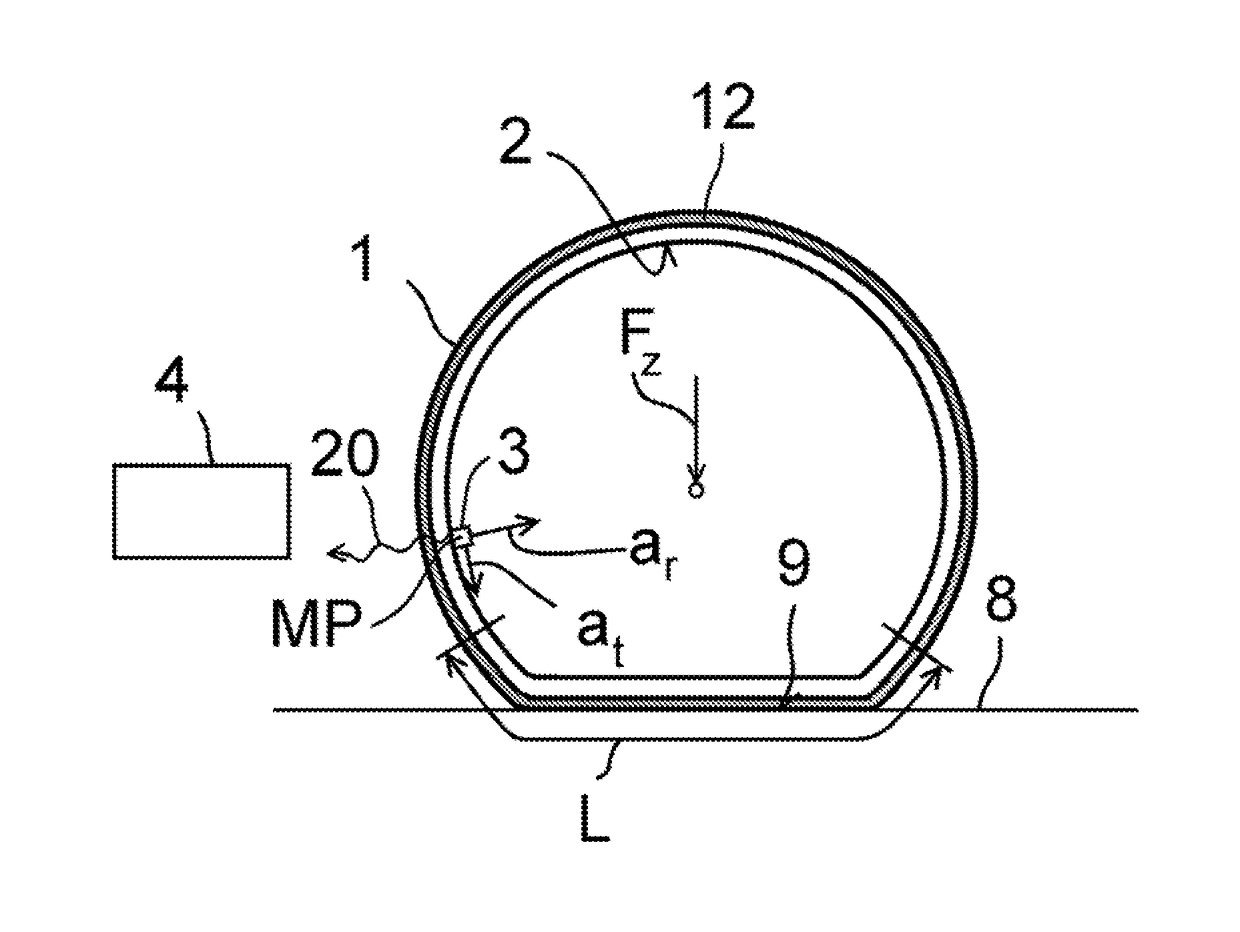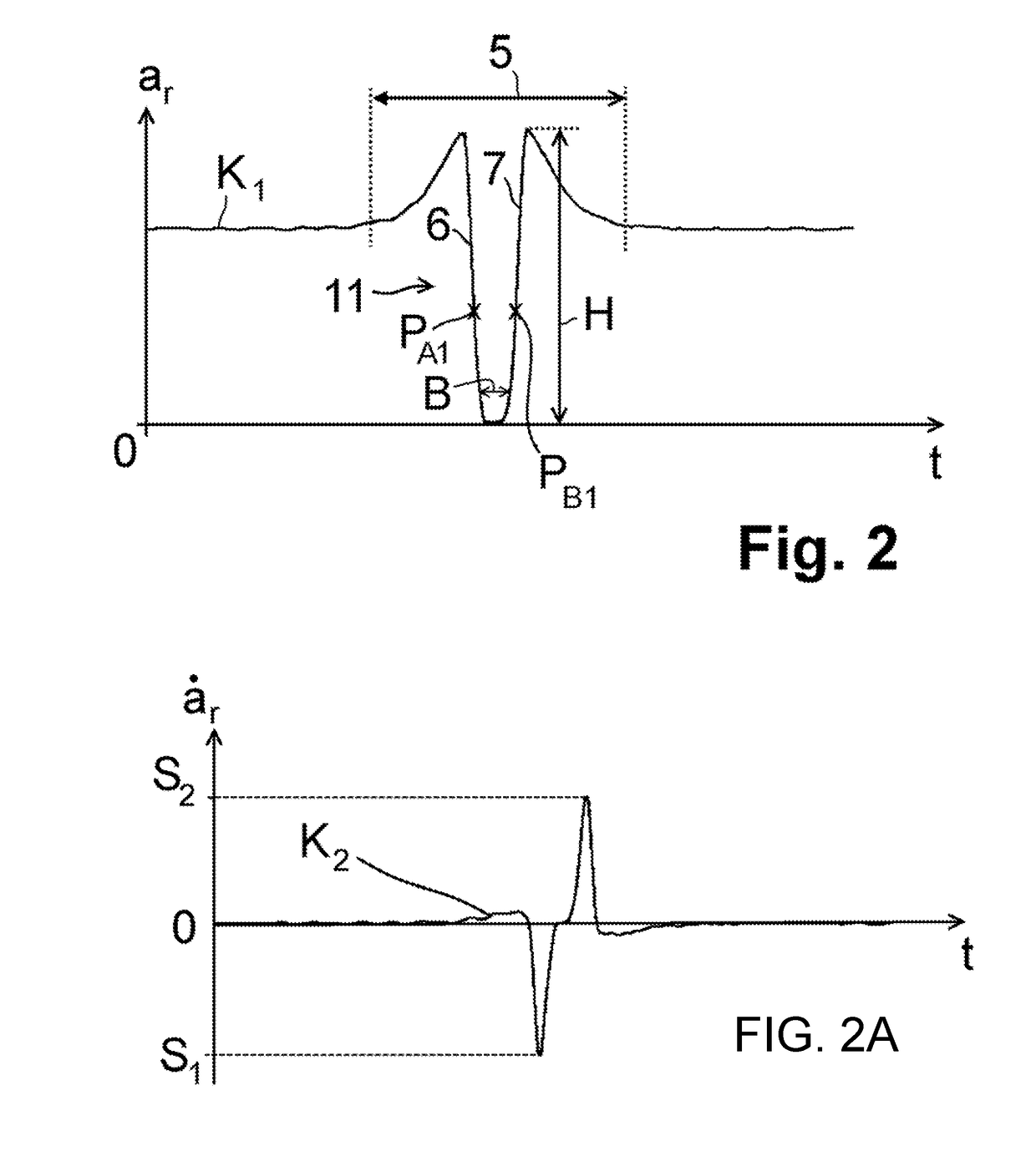Method for determining a tread depth of a tire profile and control device therefor
a technology of tire profile and control device, which is applied in the direction of measurement device, vehicle components, instruments, etc., can solve the problem of high accuracy in determining the profile depth, and achieve the effect of high reliability and high accuracy
- Summary
- Abstract
- Description
- Claims
- Application Information
AI Technical Summary
Benefits of technology
Problems solved by technology
Method used
Image
Examples
second embodiment
[0045]In a first and second embodiment, shown in FIGS. 2, 2A and 2B, firstly the radial acceleration ar is observed. In this regard, by way of example, FIG. 2 illustrates a characteristic curve K1 in which the radial acceleration ar measured by the tire sensor module 3 is plotted versus the time t. Outside an observation window 5, the radial acceleration ar is approximately constant. Within the observation window 5, the radial acceleration ar initially rises to a high point, then has a falling flank 6 which hereafter falls approximately to zero and subsequently transitions into a rising flank 7, which rises up to a second high point. At greater time values t, the radial acceleration ar falls again to a constant value outside the observation window 5, wherein the exact profile is dependent on the orientation of the tire sensor module 3 within the vehicle tire 1. Thus, in this example, the observation window 5 corresponds to a tire contact patch region L, in which a curvature of the t...
first embodiment
[0047]In a first embodiment, for the determination of a profile depth D of the vehicle tire 1, firstly a maximum negative gradient S1 and / or a maximum positive gradient S2 of the characteristic curve K1 within the observation window 5 is determined, wherein the maximum negative gradient S1 is assigned to the falling flank 6 and the maximum positive gradient S2 is assigned to the rising flank 7. It is then preferably possible to form a derivative K2 of the characteristic curve K1 with respect to the time t, which derivative is illustrated in FIG. 2A. An ordinate value (y value) of a low point and of a high point of the derivative K2 then yields the maximum negative gradient S1 and the maximum positive gradient S2 respectively.
[0048]For the further evaluation, that point of the characteristic curve K1 which is assigned the lowest ordinate value in the derivative K2 is selected as a first observation point PA1, and / or that point of the characteristic curve K1 which is assigned the high...
PUM
 Login to View More
Login to View More Abstract
Description
Claims
Application Information
 Login to View More
Login to View More - R&D
- Intellectual Property
- Life Sciences
- Materials
- Tech Scout
- Unparalleled Data Quality
- Higher Quality Content
- 60% Fewer Hallucinations
Browse by: Latest US Patents, China's latest patents, Technical Efficacy Thesaurus, Application Domain, Technology Topic, Popular Technical Reports.
© 2025 PatSnap. All rights reserved.Legal|Privacy policy|Modern Slavery Act Transparency Statement|Sitemap|About US| Contact US: help@patsnap.com



